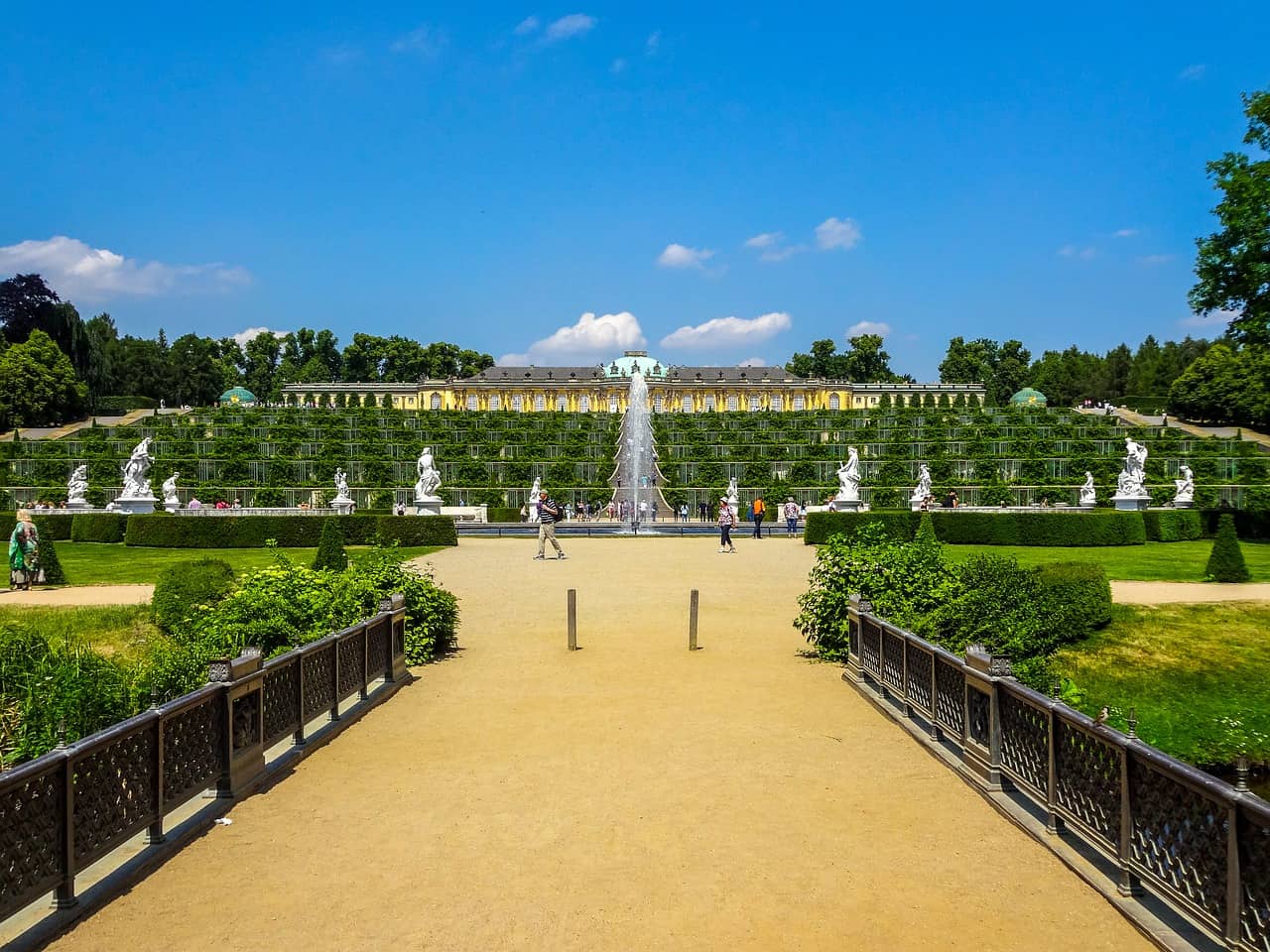Once upon a time, the King of Prussia decided that he wanted to have a place to relax outside of Berlin, especially during the summertime.
This idea resulted in the construction of one of the most fascinating palaces in the world, and in this post, you’ll discover our top 8 list of facts about Sanssouci Palace.
1. The palace is located in a city just outside of Berlin
Sanssouci Palace is located in the city of Potsdam, the largest city and capital of the German state of Brandenburg. The city is situated just 25 kilometers (16 miles) to the southwest of the center of the capital of Germany, Berlin.
Potsdam has been the residence of the Prussian Kings and German Emperors until the end of the First World War in 1918. Sanssouci Palace served as a summer residence halfway through the 18th century.
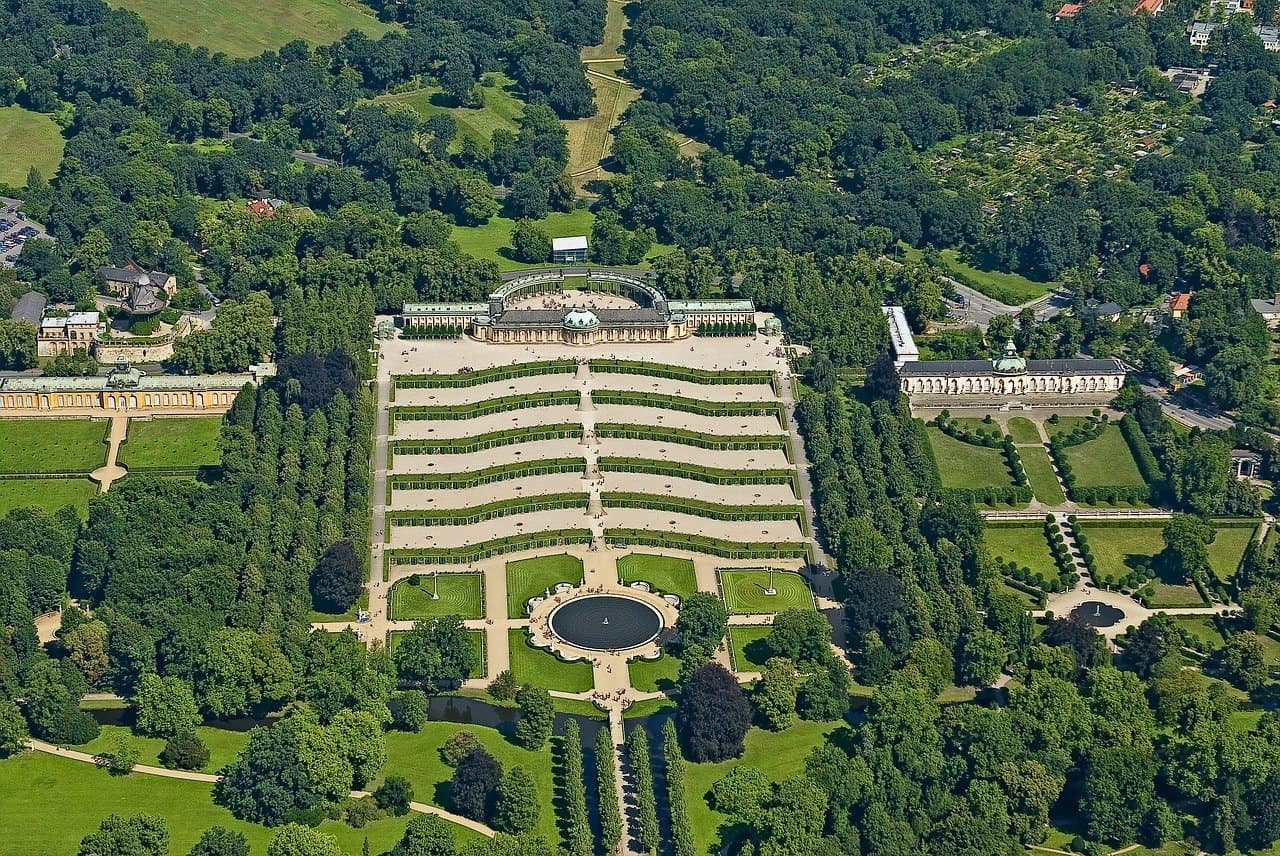
2. Why is it called the “Sanssouci Palace?”
The palace was constructed in 1745 because King Frederick II, also known as King Frederick the Great, wanted to have a quiet place outside of Berlin where he could relax.
The French words “sans souci” literally translate to “without worry,” or “carefree.” This means that the name of the palace refers to the reason why it was constructed.
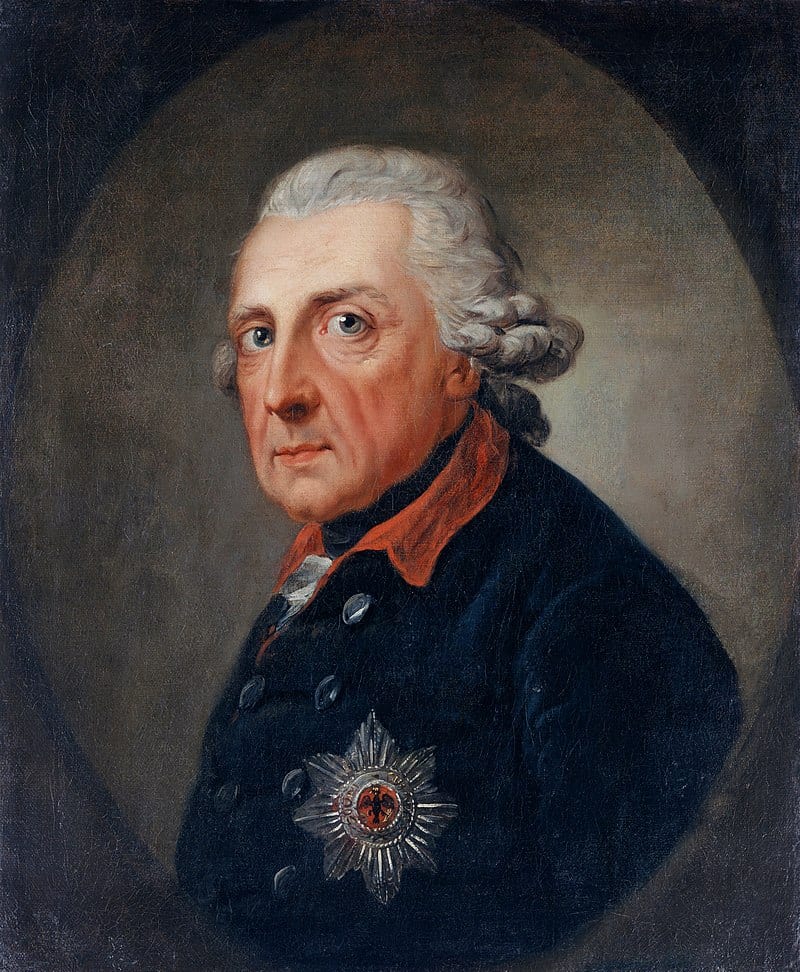
3. The comparison with the Trianon at Versailles isn’t quite accurate
One of the most interesting facts about Sanssouci Palace is that it has often been compared to the Palace of Versailles near Paris. Not the main palace at Versailles, though, but the Trianon, a smaller palace which as constructed in its immense gardens.
This comparison doesn’t make much sense because even though the “Neues Palais” or “New Palace” is located on the western edge of the garden of Sanssouci, it was constructed 20 years after the summer residence was built.
This New Palace was built to impress, just like the Palace of Versailles, in response to the near-defeat of King Frederick the Great during the Seven Years’ War.
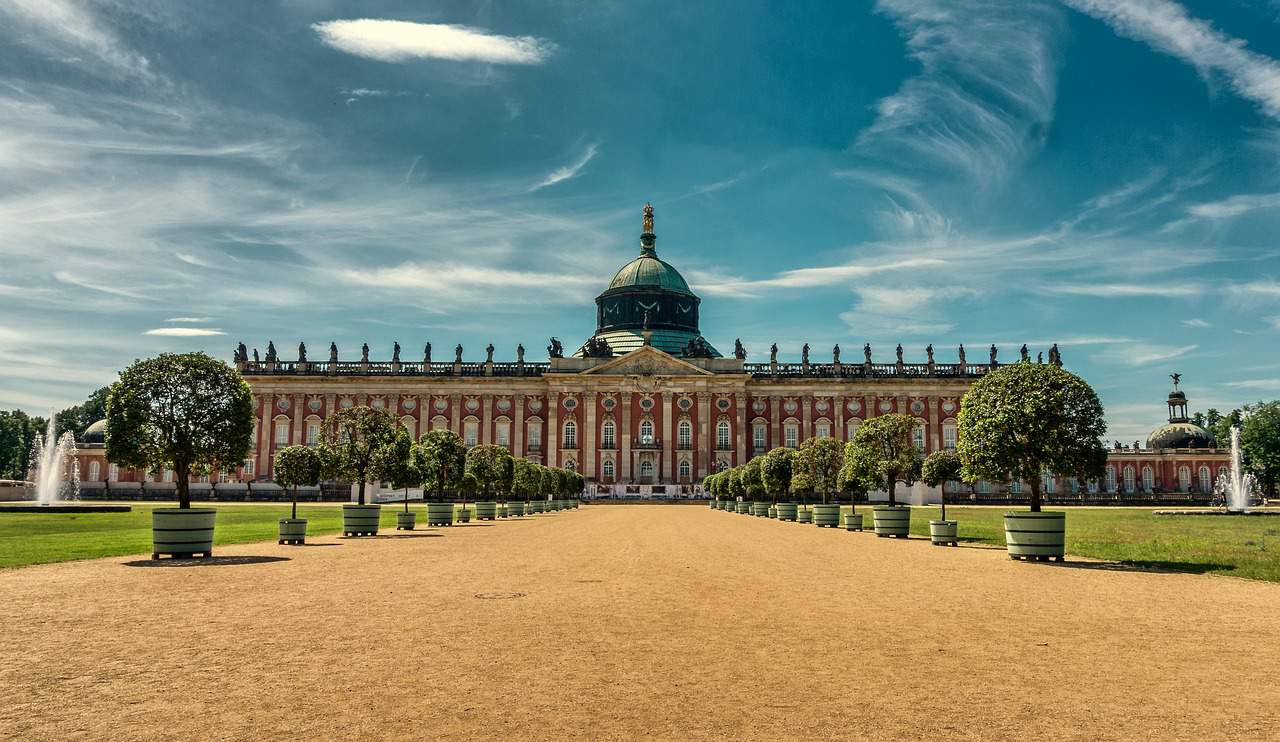
4. Sanssouci Palace was constructed in record time
Forget about a construction project that took many decades like many other palaces in the world! The Sanssouci Palace was constructed in just 2 years between 1745 and 1747.
The main reason for this is that the main block of the palace, or “corps de logis” in architectural terms, consists of just 10 rooms. That’s quite a difference compared to the 2,300 rooms at Versailles, don’t you think?
This was really intended to be a place to relax, not to impress at all!
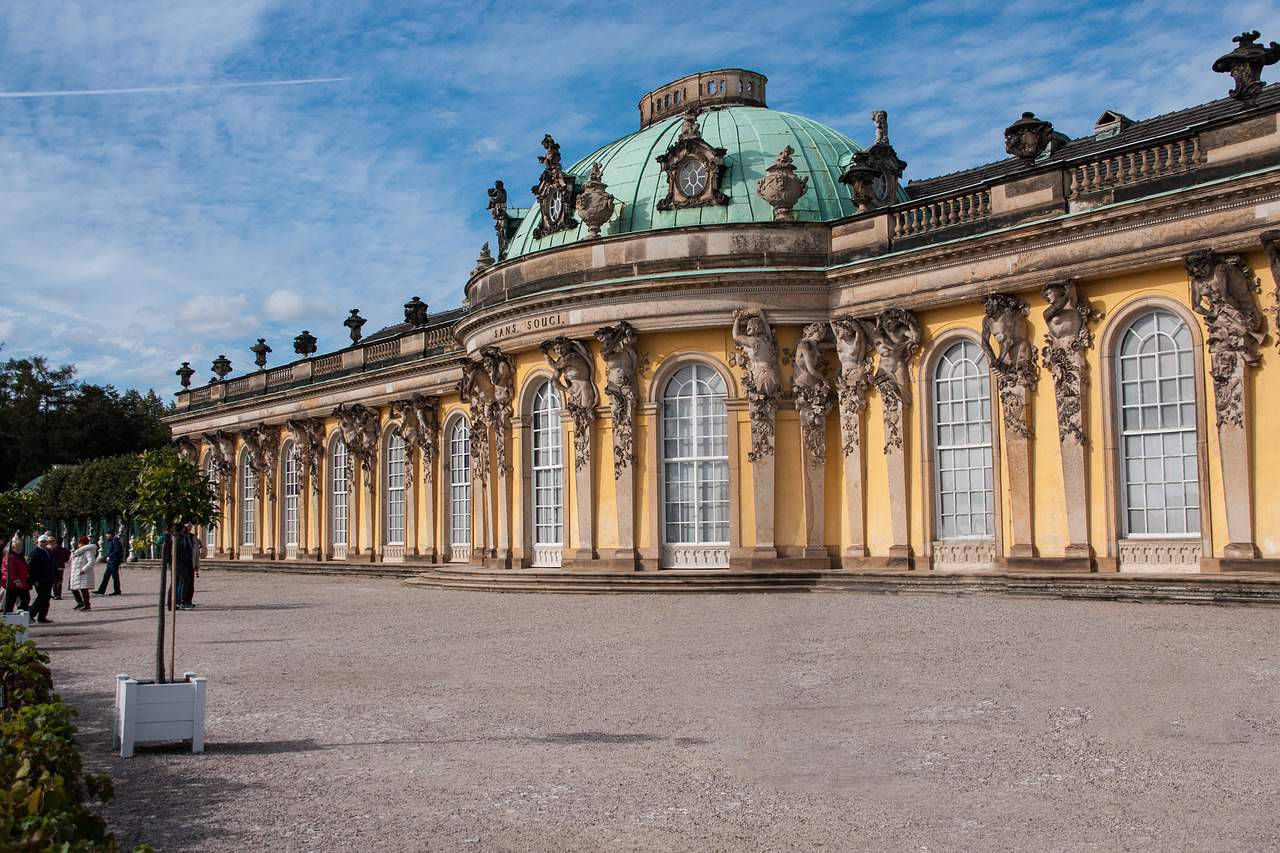
5. King Frederick had a large stake in the design of the palace
Frederick chose to construct the palace in the upcoming Rococo architectural style which had emerged in France at the beginning of the century. He hired an architect named Georg Wenzeslaus von Knobelsdorff but fired him halfway through the project. The palace was eventually completed by Dutch architect Jan Bouman.
The reason he fired his architect is because of a conflict about the exact location of the palace in the garden. This emphasizes the influence he had during the construction project of a structure he referred to as “a place that will die with me.”
The style used for the construction of the palace even got its own name and is now referred to as “Frederician Rococo,” mainly used at Sanssouci, the Potsdam City Palace, and parts of Charlottenburg Palace, one of the most amazing attractions in Berlin.
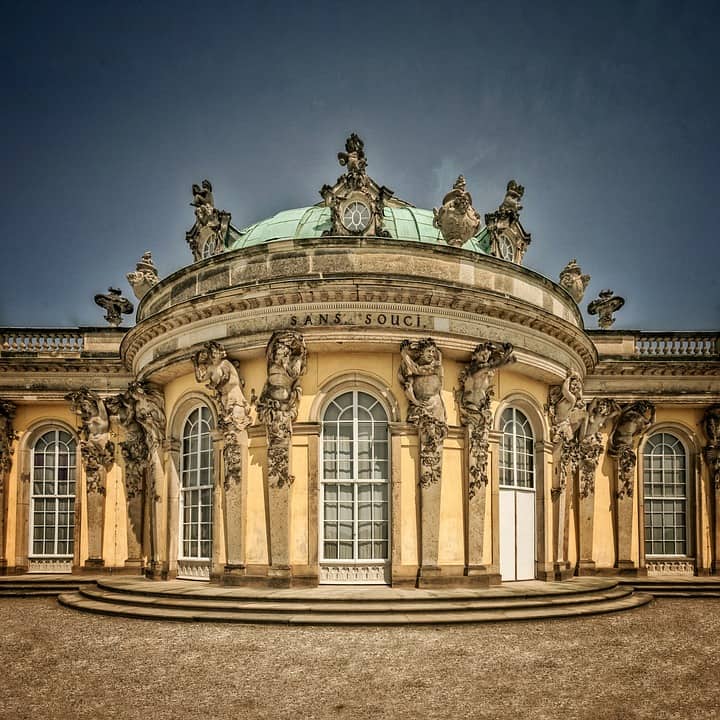
6. The hill facing the palace was turned into a terraced vineyard
While the palace is relatively humble in size (at least compared to some other palaces), it has an amazing feature right in front of it in the form of a terraced vineyard.
The area used to be completely wooded but Frederick the Great’s predecessor cut down all the trees. This resulted in a bare hill that was divided into 6 terraces which are separated by a total of 132 steps.
At the bottom, there is a richly ornamented garden in the Baroque style which includes a Great Fountain and marble statues of Venus, Mercury, Apollo, Diana, Juno, Jupiter, Mars, and Minerva. This part of the garden was modeled on the garden at Versailles.
One of the most peculiar facts about Sanssouci Palace is that Frederick the Great never saw the fountain operating because the architects were a bunch of amateurs who didn’t know how to connect the water supply to it.
It wasn’t until the year 1842 that the Great Fountain shot water 38 meters (128 feet) into the air for the first time!

7. Fredrick II is buried in the garden of the palace
Frederick the Great died in the armchair of his study in his favorite palace on August 17, 1786. He was 74 years old at the time and had reigned for 46 years, the longest of any Hohenzollern king in history.
His ultimate request was to be buried next to the “Weinberghäuschen,” or “Vineyard house,” at the Sansouci Palace. His request wasn’t obeyed by his successor, though, because he was buried next to his father, Frederick I, at the Potsdam garrison church instead.
During World War II, the coffins were brought to safety by German soldiers and brought to the salt mine at Bernterode in Eichsfeld. Good thing they did, because the church was destroyed during the war and the coffins were eventually recovered by the U.S. Military after the war.
The coffins were stored at Hohenzollern Castle from 1952 until the reunification of Germany in the early 1990s. It wasn’t until August 17, 1991, exactly 205 years after his death, that his final wish was granted and he was interred on the highest terrace of the vineyards facing his palace.

8. It has been a popular tourist attraction since World War II
The parks and palaces of Sanssouci became a World Heritage Site in 1990 and are the largest UNESCO World Heritage site in Germany.
The palace has been a tourist attraction in East Germany ever since the end of World War II. In 1995, an organization was formed called the “Foundation of Prussian Palaces and Gardens in Berlin-Brandenburg” to take care of the Sanssouci complex and other palaces in the region.
It’s one of the most fascinating tourist attractions in Germany and receives nearly half a million visitors every year, keen on admiring the magnificent architecture and fascinating landscaped gardens!
